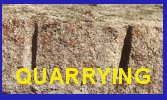|
The Architecture of America’ Stonehenge
By Mary E. Gage
with a chapter on Jonathan Pattee contributed by James E. Gage
8.5 x 11 inches, trade paperback, 336 pp. 263 illus., $25
The main complex of the America’s Stonehenge site in New Hampshire is a collection of stone chambers, enclosures, niches, standing stones, carved drains & basins, and astronomical alignments. The archaeological community has largely dismissed this seemly eclectic collection of structures as the work of an eccentric farmer named Jonathan Pattee who built his house on top of the ruins in the 19th century. Other researchers have sought to compare the chambers and astronomical alignments to stone structures from around the world built by other ancient peoples. No one has thought to evaluate the site on its own merits, specifically evaluating its architecture.
Architecture can tell you a lot about a culture. Using this approach, the author unravels the mystery surrounding the site. This architectural study revealed the site was built in a series of distinct phases each with its own unique style while at the same time incorporating key concepts and ideas from previous phases. There is a clear evolution of building skills and cultural ideas that can be followed through the architectural build-out of the site. Because key features and ideas were carried forward from one phase to the next, we now know that the site was the work of a single culture over a several thousand year period.
Stone tools and pottery recovered from archaeological excavations at the site confirm that the builders were Native Americans. The idea of Native Americans building stone structures for ceremonial and spiritual purposes has gained a lot of credibility over the past twenty-five years. There is mounting evidence that hundreds of ceremonial stone landscapes (CSL) with stone cairns, niches, enclosures, standings stones, chambers and astronomical alignments found throughout northeastern United States are part of a broad based Native American cultural tradition. The America’s Stonehenge site is one of the most sophisticated and culturally complex of these sacred ceremonial places.
The second part of this book uses primary source materials like deeds, town records, court cases and genealogy to reconstruct the history of the Pattee family who owned the hill where the site is found from 1739 through 1863. The Pattees started out in the 1700s as a prosperous family with a house in North Salem village and a 248 acre farm. By the 1820s, the third generation was reduced to owning 15 acres of the original farm and living in a small house built on top of the ruins of the site. Despite his many financial misfortunes, Jonathan Pattee (third generation) managed to hold on to and protect the site.
Available from publisher www.PowwowRiverBooks.com
Available on Amazon.com
|








